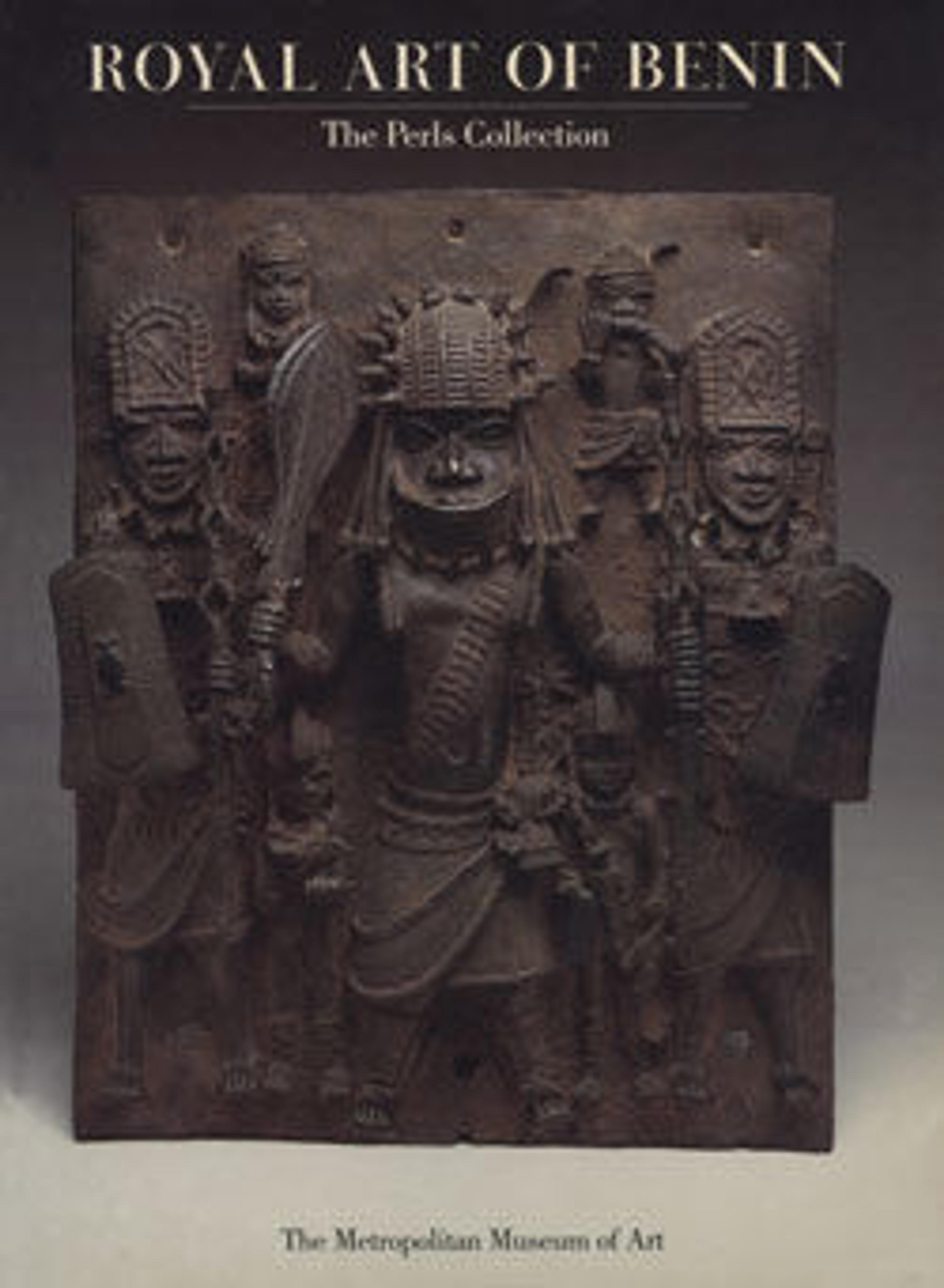Lidded Vessel: Fluted Gourd
In the Benin kingdom, kola nuts were an important focus of courtly interactions. A symbol of civilization, sociability, and rank, they were given to guests to show hospitality and distributed as small offerings at ritual events associated with honoring ancestors, including divination practices. Kola nuts were frequently stored and presented in elaborately designed and decorated containers made from wood, ivory, or brass. This box, in the form of a gourd raised on a footed pedestal, was likely the property of an oba or an important chief given that works in brass are reserved for only those of the highest rank.
The unusual shape of the vessel—an oblong form with multiple, lengthwise ridges—takes its inspiration from a species of gourd that frequently served as an offering to Osanobua, the creator god. As such, the container's design involves a series of visual and conceptual puns. Not only do the two resemble each other in shape and size, but each serves as a "box" for what lies within, whether it be kola nuts or seeds. Additionally, the gourd's associations with sacrifice and ritual reflect the ceremonial usage of the kola nuts stored inside.
The unusual shape of the vessel—an oblong form with multiple, lengthwise ridges—takes its inspiration from a species of gourd that frequently served as an offering to Osanobua, the creator god. As such, the container's design involves a series of visual and conceptual puns. Not only do the two resemble each other in shape and size, but each serves as a "box" for what lies within, whether it be kola nuts or seeds. Additionally, the gourd's associations with sacrifice and ritual reflect the ceremonial usage of the kola nuts stored inside.
Artwork Details
- Title:Lidded Vessel: Fluted Gourd
- Date:16th–19th century
- Geography:Nigeria, Court of Benin
- Culture:Edo peoples
- Medium:Brass
- Dimensions:H. 9 1/4 x W. 7 1/2 x D. 3 1/2 in. (23.5 x 19.1 x 8.9 cm)
- Classification:Metal-Containers
- Credit Line:Gift of Mr. and Mrs. Klaus G. Perls, 1991
- Object Number:1991.17.66a, b
- Curatorial Department: The Michael C. Rockefeller Wing
More Artwork
Research Resources
The Met provides unparalleled resources for research and welcomes an international community of students and scholars. The Met's Open Access API is where creators and researchers can connect to the The Met collection. Open Access data and public domain images are available for unrestricted commercial and noncommercial use without permission or fee.
To request images under copyright and other restrictions, please use this Image Request form.
Feedback
We continue to research and examine historical and cultural context for objects in The Met collection. If you have comments or questions about this object record, please contact us using the form below. The Museum looks forward to receiving your comments.
